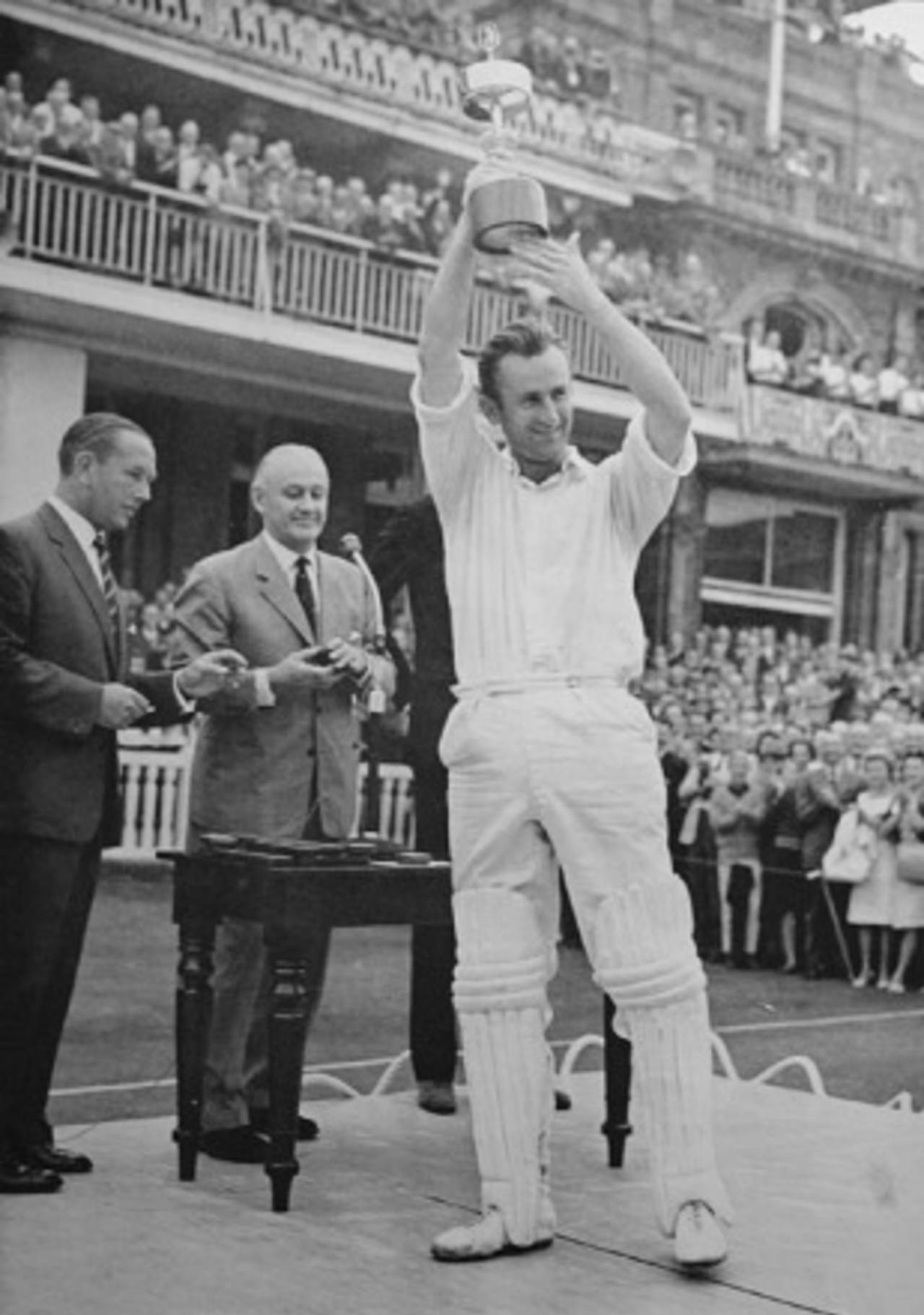A competition at the cutting edge
The English domestic scene, and following it the international cricketing scene, changed dramatically with the birth of limited-overs cricket
Ivo Tennant
08-Feb-2011

Ted Dexter raises the Gillette Cup for Sussex • Playfair Cricket Monthly
Limited-overs cricket was born in England in 1963, not merely because attendances were falling at county championship matches, but to some extent as a result of boredom. Travelling long distances to stay in ordinary hotels and then performing in front of small crowds the following morning was a repetitive exercise, especially for the leading players. For spectators, the prospect of watching all the stars perform over a guaranteed two innings in a day, culminating in a positive result, was intoxicating.
This novel form of the game immediately prospered, despite, as The World of Cricket put it, "misgivings among the more conservatively minded". Crowds had fallen away after the post-war years, a decline that was also to be arrested by the introduction of overseas cricketers in the championship. By 1963 it was apparent that it would be worth developing the experimental Midlands Counties Knock-out Cup competition that had been staged the previous year.
This was a time when British people desired fresh entertainment: James Bond, George Best and The Beatles came to the fore at around the same time. Sponsorship for the fledgling competition was found from the Gillette Razor Company. The company's blades soon held an appeal that had not been found in shaving before. To this day, long after its links with cricket have ended, its name is still intertwined with that of the game.
In 1963, knock-out cricket was devised to resemble the first-class game in as many ways as possible. Each match was to run to 65 overs an innings, with no bowler able to bowl more than 15 overs. Even in an age of much quicker over-rates, this was still ambitious: not surprisingly, the first fixture, on May 1 between Lancashire and Leicestershire, stretched over two days, hence negating one reason for developing the format. It was not as if MCC, after consultation with the leading county clubs that had begun at the end of the 1950s, was unaware that it could rain in Manchester.
This format was trimmed to 60 overs and a maximum of 13 per bowler by the following year, with the minor counties included to provide cricket's version of the FA Cup. Not that this made much difference, for the strong likelihood of a finish in a day, coupled with increased intensity of effort, not least among the fielders, instantly appealed. Mid-week ties did not deter spectators and the first two finals, in 1963 and 1964, drew full houses, with no room for anyone wanting to turn up on the day without a ticket.
Floodlights were light years away. The captains in these finals were warned that "heavy shadows may move across the pitch towards the end of the day, and no appeal against the light will be considered in such circumstances". Evidently most of the fixtures would have to be played on the long days of mid-summer.
There was, of course, a downside. The first final was a low-scoring but close match and the second a one-sided disappointment. Sussex won them both, beating Worcestershire and Warwickshire through tactics that appealed to Ted Dexter, their captain, whose attention could drift in the conventional form of county cricket. He swiftly appreciated that accurate medium pace, allied to quick-scoring batting, such as provided by himself and Jim Parks, was the requisite approach. The English seamer, the niggardly short-of-a-length old pro, was now in his element, as he was to prove throughout the decade in three-day matches on uncovered pitches. This did not always make for stimulating cricket.
Although Dexter, ever the innovator, swiftly came to the realisation that this form of the game was as important to the counties as the championship, for many years that was not the belief held among committee men. In 1963, Glamorgan left out five frontline players from their first match so that they could rest. This viewpoint can often still be found today. A decade on from Dexter's triumphs, another England captain would focus on one-day success. In 1976 Kent, under Mike Denness, won two limited-overs trophies but finished 14th in the championship table. He was ousted as captain that autumn.
By then, the number of one-day competitions had grown markedly. An international single-wicket competition was staged at Scarborough in 1963 and then moved to Lord's the following year. The success of the Cavaliers, a Sunday wandering troupe that drew large crowds, was translated into the 40-overs-a-side John Player League in 1969. The Benson & Hedges Cup and World Cup and interminable one-day internationals would follow. A monster had been spawned.
This article is the third of a ten-part series on innovations in cricket, in partnership with Saab. Next week, the proliferation of day-night cricket